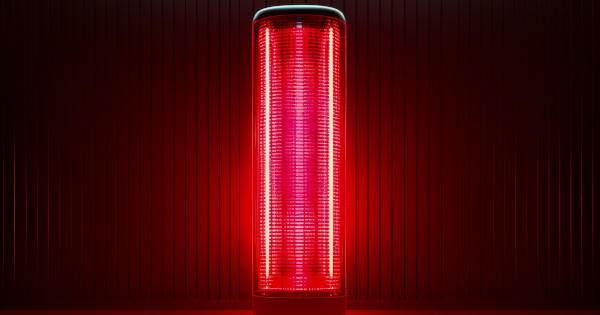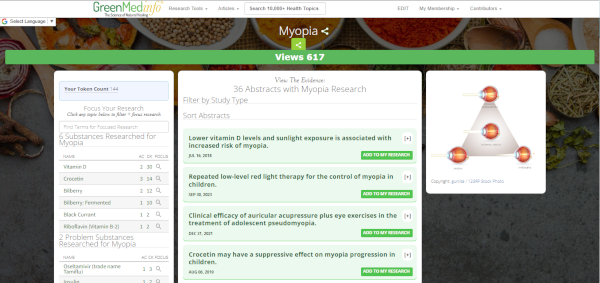Originally published on: February 14th 2024
Does your child spend hours glued to digital devices? This common habit could sabotage their vision for life. The solution could be as easy as targeted light exposure
A global rise in childhood myopia rates over recent decades has sounded alarm bells for eye care professionals. Myopia, or nearsightedness, now affects 30-50% of school-aged children in East Asia and up to 20% of youth in Western countries.1 Researchers warn we could see 5 billion cases of myopia worldwide by 2050.2
A number of lifestyle changes like increased screen time both at home and at school drive are likely driving this worsening epidemic.
Smartphones and Tablets: A Myopiagenic Double Threat
Two recent systematic reviews implicate smart devices like phones and tablets as risk factors for childhood myopia. The first combined data from over 50,000 participants across 33 studies. More total screen time raised a child’s odds of myopia by 77%.3 Smartphone use alone increased risk by 26%. The second review focused specifically on tablet use. More daily tablet screen exposure associated with 40% higher myopia odds.4
Experts hypothesize why these portable screens pose problems. Their small size encourages closer viewing distances, increasing focus demand. Whatever the mechanism, with the average 8-10 year old spending over 4 hours a day on screens,6 myopia progression seems inevitable for many.
Blue Light: An Overlooked Culprit
The high-energy blue light emitted by device screens carries particular concern. Blue light may impair retinal neurotransmitters influencing eye growth.5 Animal research shows blue wavelength exposure triggers retinal changes that spur axial elongation and myopia development.7 Experts now implicate blue light’s disruption of circadian rhythms in altering ocular growth regulation.8 Reducing blue light exposure could provide a dual benefit – decreased eye strain and myopia protection.
Turning Back the Clock with Red Light Therapy
If screens exacerbate myopia, could targeted light exposure reverse it? Emerging research suggests it may.
One recent study combined data from over 2000 children in Asia. Those randomized to just 30-60 minutes daily of red light therapy showed nearly 40% less axial eye growth over 2 years. They also progressed 50% more slowly in refractive error compared to controls.9 Based on its myopia-blocking effects, experts now endorse red light therapy alongside other treatments.9
But how does red light stack up against other methods? Bayesian network meta-analysis allows comparing multiple myopia interventions head-to-head. A new study used this technique to analyze 12 trials with various wavelengths. Once again, red light dominated. It ranked first in slowing axial elongation and preventing refractive change out of all light colors.10 Based on the totality of evidence, red light therapy shines as an promising myopia treatment.
A Two-Pronged Strategy: Moderation Plus Red Light
Research now clearly implicates screen overexposure in worsening childhood myopia, partly through blue light toxicity. Public health campaigns should continue emphasizing device moderation and blue light reduction. However, red light therapy provides a complementary solution to counter existing damage. Just 30-60 minutes daily helps mitigate the myriad myopiagenic effects of our modern, technology-centered lifestyles. In the escalating war against nearsightedness, red light offers clinical medicine a new healing weapon. Let us use it wisely.
For more information on red light therapy, visit our database on the subject here. For those interested in increasing red light exposure, visit our preferred vendors of red light products here.
To learn more about natural approaches to addressing myopia, visit our database on the subject here.
Learn more about the dangers of blue light exposure and screen time here.
References
1. Holden, Bruce A., et al. “Global Prevalence of Myopia and High Myopia and Temporal Trends from 2000 through 2050.” Ophthalmology, vol. 123, no. 5, 2016, pp. 1036-42, https://doi.org/10.1016/j.
2. Holden, Bruce A., et al. “Global Prevalence of Myopia and High Myopia and Temporal Trends from 2000 through 2050.”
3. Foreman, Joshua, et al. “Association between Digital Smart Device Use and Myopia: A Systematic Review and Meta-Analysis.” The Lancet Digital Health, vol. 3, no. 12, 2021, pp. e806-18, https://doi.org/10.1016/S2589-
4. Liu, Shuang, et al. “Electronic Devices and Myopic Refraction among Children Aged 6-14 Years in Urban Areas of Tianjin, China.” Ophthalmic and Physiological Optics, vol. 39, no. 4, 2019, pp. 282-93, https://doi.org/10.1111/opo.
5. Zhou, Xiangtian, et al. “Dopamine Signaling and Myopia Development: What Are the Key Challenges.” Progress in Retinal and Eye Research, vol. 61, 2017, pp. 60-71, https://doi.org/10.1016/j.
6. Rideout, Victoria. The Common Sense Census: Media Use by Kids Age Zero to Eight. Common Sense Media, 2017.
7. Lan, Weizhong, et al. “Blue Light Induces Myopia-Like Changes in Chicken Retinal Gene Expression Profiles.” International Journal of Molecular Sciences, vol. 22, no. 22, 2021, p. 12369, https://doi.org/10.3390/
8. Ayaki, Masahiko, et al. “Protective Effect of Blue-Light Shield Eyewear for Adults against Light Pollution from Self-Luminous Devices Used at Night.” Journal of Clinical Medicine, vol. 9, no. 2, 2020, p. 484, https://doi.org/10.3390/
9. Zaabaar, Ebenezer, et al. “Light Exposure Therapy for Myopia Control: A Systematic Review and Bayesian Network Meta-Analysis.” British Journal of Ophthalmology, 2023, https://doi.org/10.1136/bjo-
10. Zaabaar, Ebenezer, et al. “Light Exposure Therapy for Myopia Control: A Systematic Review and Bayesian Network Meta-Analysis.”
The GMI Research Group (GMIRG) is dedicated to investigating the most important health and environmental issues of the day. Special emphasis will be placed on environmental health. Our focused and deep research will explore the many ways in which the present condition of the human body directly reflects the true state of the ambient environment.
© February 14th 2024 GreenMedInfo LLC. This work is reproduced and distributed with the permission of GreenMedInfo LLC. Want to learn more from GreenMedInfo? Sign up for the newsletter here https://www.greenmedinfo.com/greenmed/newsletter.
Source: Original Article
Originally published on: February 14th 2024


